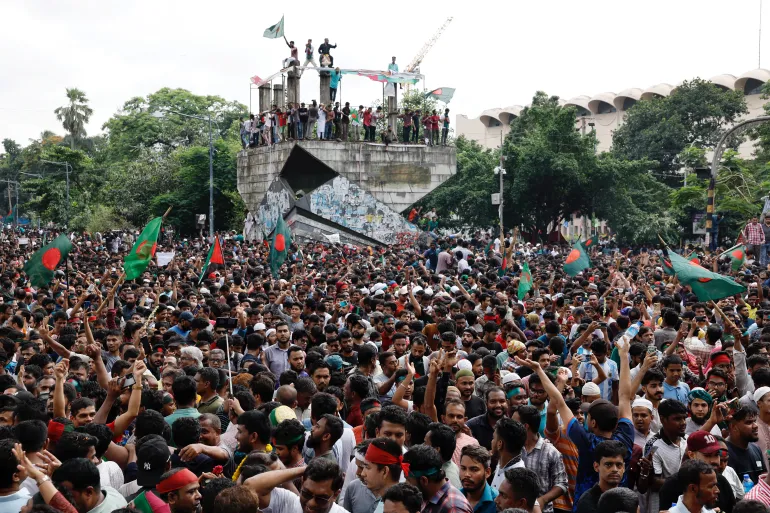A Deep Dive into the Israel-Iran Conflict: Tensions, Targets, and Global Stakes.
- Key Points:
- Israel launched extensive airstrikes on Iran starting June 13, 2025, targeting nuclear sites, gas facilities, and military bases, marking a significant escalation.
- Iran vowed a “massive and devastating” retaliation, launching drones and missiles in response, with more attacks promised.
- The conflict has killed at least 78 people in Iran, including top military leaders and scientists, and caused widespread damage.
- Global leaders urge de-escalation, but stalled nuclear talks and regional tensions complicate diplomacy.
- The situation remains volatile, with risks of a broader conflict involving regional players or global powers.
Middle East on Edge : What Happened?

On June 13, 2025, Israel initiated a bold military operation against Iran, striking key nuclear, energy, and military targets. The attacks, which continued into Saturday, hit sites like the Natanz nuclear facility and gas refineries in Bandar Abbas. Iran responded with drone and missile attacks on Israel, killing four and injuring over 125. Both nations are bracing for further conflict, with Iran promising a severe counterstrike.
Middle East on Edge : Why Does It Matter?
These strikes represent the first direct Israeli attack on Iran’s nuclear infrastructure, escalating a decades-long shadow war. The targeting of Iran’s leadership and energy sector could destabilize its economy and government, while Israel’s actions aim to curb Iran’s nuclear ambitions, viewed as a threat to its survival. The conflict risks drawing in regional allies and global powers, potentially disrupting oil markets and international relations.
Middle East on Edge : What’s Next?
The immediate future hinges on Iran’s promised retaliation and Israel’s response. Diplomacy seems distant, with U.S.-Iran nuclear talks canceled and both sides entrenched. The conflict could widen, impacting global energy prices and regional stability, or pressure Iran to negotiate under duress. Civilians in both nations are preparing for prolonged unrest, highlighting the human stakes.
A Region in Turmoil: The Conflict Unfolds
Imagine waking to news of explosions rocking cities across Iran, from the bustling port of Bandar Abbas to the historic heart of Isfahan. On June 13, 2025, this became reality as Israel launched an unprecedented wave of airstrikes targeting Iran’s nuclear facilities, gas refineries, and military command centers. The operation, named “Nation of Lions,” marked the first direct Israeli assault on Iran’s nuclear infrastructure, escalating a decades-long feud into a dangerous new phase. Iran, stunned but defiant, vowed a “massive and devastating” retaliation, launching drones and missiles at Israel in what it called “Operation True Promise III.” As air raid sirens blared in Tel Aviv and power cuts darkened Tehran, the world braced for the possibility of a full-scale Middle East war. This blog post unpacks the strikes, their human toll, and the global implications of a conflict that could reshape the region.
The Targets: Where Israel Struck
Israel’s operation was a masterclass in precision and audacity, deploying around 200 aircraft to hit approximately 100 targets across Iran. The Israeli Air Force, supported by Mossad intelligence, aimed to cripple Iran’s nuclear ambitions and energy infrastructure. Key targets included:
- Nuclear Facilities: The Natanz nuclear enrichment site, Iran’s largest, suffered “significant damage,” with black smoke rising from its structures ([Israel Hayom]). Isfahan’s nuclear research complex, employing 3,000 scientists, and the fortified Fordo underground site were also hit, though damage assessments vary.
- Energy Infrastructure: Gas facilities in Bandar Abbas, near the Strait of Hormuz, and the South Pars Gas Field in Bushehr were struck, worsening Iran’s gas shortages and triggering nationwide power cuts. Tehran’s Shahran Oil Depot and an oil ministry building were targeted, threatening Iran’s oil exports, a lifeline for its economy.
- Military Bases: Sites in Tehran, Kermanshah, Khuzestan, West Azerbaijan, and Lorestan housed Iran’s ballistic missile program and air defenses. Israel destroyed dozens of radar installations and surface-to-air missile launchers, allowing its jets to penetrate deep into Iranian territory.
The operation pushed Israel’s military to its limits, relying on aging air-to-air refuelers to reach distant targets. It’s unclear whether Israeli jets entered Iranian airspace or used standoff missiles, but Iraqis reported hearing fighter jets overhead, suggesting possible use of Iraqi airspace. Mossad’s role was pivotal, smuggling explosive drones and precision weapons into Iran to disable missile launchers and air defenses, ensuring the strikes’ success.
| Target Type | Location | Impact |
|---|---|---|
| Nuclear Facilities | Natanz, Isfahan, Fordo | Significant damage to Natanz; disrupted Iran’s nuclear research. |
| Energy Infrastructure | Bandar Abbas, Bushehr, Tehran | Worsened gas shortages; potential rise in global oil prices. |
| Military Bases | Tehran, Kermanshah, Khuzestan | Destroyed missile launchers and air defenses; weakened Iran’s retaliation. |
The Human Cost: Lives Lost and Leadership Shattered

The strikes left a trail of devastation. Iran reported at least 78 deaths and 320 injuries, including civilians caught in attacks on residential areas. The toll included some of Iran’s most critical figures:
- Military Leaders: General Mohammad Bagheri (armed forces chief), General Hossein Salami (IRGC leader), and General Amir Ali Hajizadeh (ballistic missile program head) were killed, decapitating Iran’s military command.
- Nuclear Scientists: Mohammad Mehdi Tehranchi and Fereydoun Abbasi, key to Iran’s nuclear program, perished.
- Civilians and Academics: Five professors from Tehran’s Shahid Beheshti University and their families died, highlighting the strikes’ broad impact.
Iran’s Supreme Leader, Ayatollah Ali Khamenei, called the attacks a “wicked crime” but swiftly appointed replacements to maintain stability. The loss of these leaders and scientists is a severe blow to Iran’s ability to sustain its nuclear and military programs, complicating its response.
Iran’s Counterattack : Drones and Missiles Strike Israel
Iran wasted no time retaliating. On Friday night, it launched “Operation True Promise III,” firing over 100 drones and hundreds of ballistic missiles at Israel. Israel’s Iron Dome, bolstered by U.S. support, intercepted many projectiles, but some broke through, killing four people, including an 11-year-old boy, and injuring over 125. Explosions rocked Tel Aviv, Jerusalem, Tamra, and Bat Yam, damaging homes and buildings.
Iran’s air defenses, activated in Bandar Abbas, Isfahan, and Tehran, struggled against Israel’s relentless strikes. Tehran suspended flights at Imam Khomeini Airport and ordered remote work for non-essential employees until Wednesday. Iran’s vow of further “devastating” attacks has raised fears of a prolonged conflict, potentially targeting U.S. bases or involving Iran-backed groups like Yemen’s Houthis.
Global Reactions : Calls for Peace Amid Rising Tensions
The world reacted with alarm. U.S. President Donald Trump distanced himself from the strikes, stating on Truth Social, “Iran must make a deal, before there is nothing left” (CBS News). He warned of “even more brutal” attacks if Iran escalates, while canceling nuclear talks scheduled for June 15 in Oman. The U.S. moved ships and air defenses to the region and evacuated some diplomats from Iraq, signaling heightened alert.
The International Atomic Energy Agency (IAEA) confirmed damage to Natanz and Isfahan but reported no radioactive leaks, urging restraint (Reuters). Jordan and Iraq closed their airspace, and G7 leaders called for de-escalation. Iran’s allies, like Hezbollah, condemned the strikes but refrained from joining the fight, wary after a recent U.S.-brokered ceasefire (Al Jazeera).
| Country/Group | Reaction |
|---|---|
| United States | Warned Iran; moved military assets; canceled nuclear talks. |
| IAEA | Confirmed nuclear site damage; urged restraint. |
| Hezbollah | Condemned strikes but did not join retaliation. |
| Jordan, Iraq | Closed airspace; condemned attacks. |
Why Now? Roots of the Rivalry
This clash stems from decades of hostility. Israel has long targeted Iran’s proxies, like Hezbollah and Hamas, while Iran has struck Israeli interests in Syria. The Gaza war, sparked by Hamas’ October 2023 attack, intensified tensions, followed by Israel’s April 2024 strike on an Iranian consulate in Syria and assassinations of Hamas and Hezbollah leaders.
Iran’s nuclear program, which it claims is civilian, is a core issue. Israel views it as an existential threat, especially after the IAEA censured Iran on June 12, 2025, for non-compliance (NPR). Stalled U.S.-Iran nuclear talks, with Trump’s 60-day deadline expiring, added pressure. Israel’s strikes aim to delay Iran’s nuclear progress, though underground facilities like Fordo remain operational.
Regional Players: Who’s Watching?
The conflict involves more than Israel and Iran:
- Hezbollah: Condemned the strikes but stayed out, cautious after losses in its November 2024 war with Israel.
- Syria: A key Iranian ally and frequent target of Israeli strikes, Syria could become a flashpoint.
- Gulf States: Saudi Arabia and the UAE, rivals of Iran, have remained silent but could influence diplomacy.
- Iraq: Closed its airspace, fearing spillover from the conflict.
These players’ actions could either escalate or temper the crisis, depending on their strategic calculations.
Looking Ahead: War or Diplomacy?
The future is uncertain. Israel’s Prime Minister Benjamin Netanyahu vowed to continue until Iran’s nuclear threat is neutralized, expressing hope that the strikes could spark the downfall of Iran’s theocracy (The Washington Post). Iran’s Ayatollah Khamenei promised “harsh punishment,” signaling more attacks. Both sides’ militaries are stretched, with Israel relying on aging equipment and Iran facing economic strain from power cuts and sanctions.
In Israel, civilians stockpile supplies, and schools are closed as families prepare shelters. In Iran, gas shortages and economic woes could fuel unrest against the regime. A wider war risks involving the U.S., Russia, or Gulf states, potentially spiking global oil prices by 10-15% due to disruptions in the Strait of Hormuz. Diplomacy is challenging, with nuclear talks stalled, but international pressure might push Iran to negotiate to avoid further devastation.
What will happen next? Can diplomacy avert catastrophe, or is the Middle East headed for war? The coming days will be pivotal.
A Region Transformed
The Israel-Iran conflict has reached a turning point. With lives lost, infrastructure in ruins, and the threat of escalation looming, the stakes are immense. As global leaders call for peace, the path forward remains fraught. This clash will shape the Middle East’s future, for better or worse. Join the conversation: what do you think lies ahead?
Disclaimer: This article is based on reported events and aims to inform, not advocate. The views expressed do not reflect the opinions of this publication.
Sources: Israel Hayom, Tasnim News, BBC News, Reuters, The New York Times, Al Jazeera, CBS News, NPR, The Washington Post




